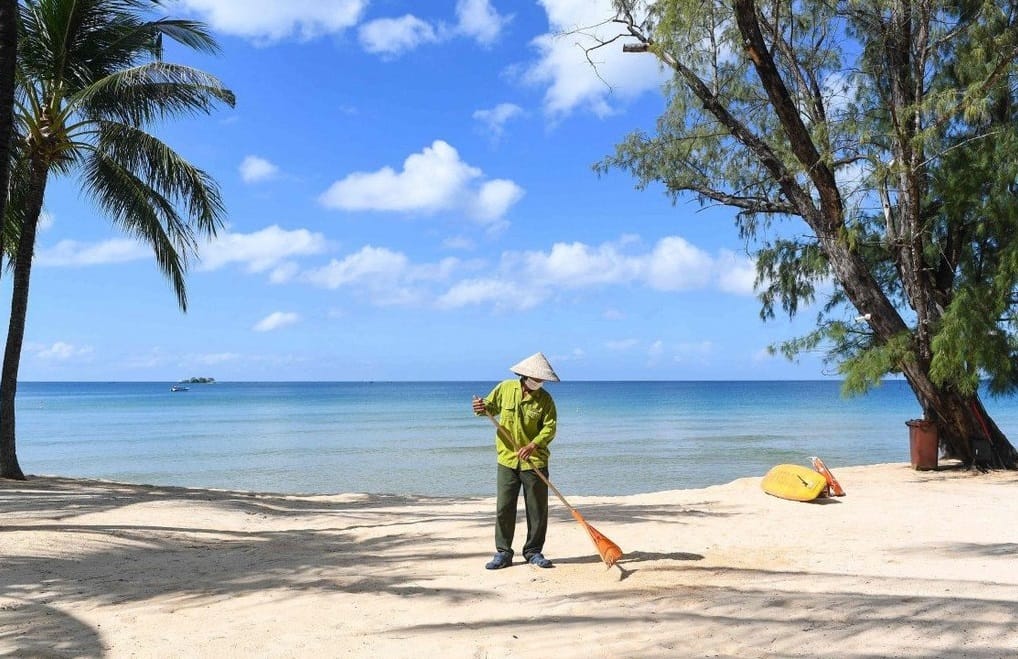Ajay Singh is standing at the door of his palace-turned heritage hotel in Udaipur, rubbing his hands together in glee.
He’s been hosting the wedding planners and flower arrangers for a huge wedding that’s taken over the town, including the maharana’s palace itself, the City Palace, and the Lake Palace, now a five-star hotel in the middle of Lake Pichola.
The wedding slap bang in the middle of India’s wedding season is said to be that of the daughter of a Mumbai arms dealer – complete with many Russian guests, presumably his clients.
With members resembling characters from a novel about decaying British aristocracy, the Rajput clan that Singh belongs to has taken on a new role – tourism hosts, guides and hoteliers.
Even the Maharana of Udaipur (as he’s known locally) is a hotelier and we’re told his son has been studying hotel management in Melbourne.
Singh has put the rates up for certain guests of his 300-year-old home turned hotel because he hates the way the now new “filthy rich” in India are continuing the corruption of former years and “ripping off” Indians of every class.
“On one side we’re making super computers. . . but we can’t clean the streets,” he says, as an illustration of what he thinks is wrong with rapidly-changing India.
“If we think of the past we won’t have a future,” he says, pointing out that his grandfather couldn’t change with the times and “suddenly you have nothing”.
Rajputs, which comes from the sanskrit word meaning son of a king (rajputra), of Rajputana, in north west India, an historic region now almost coextensive with the state of Rajasthan, are mainly Hindus of the warrior caste.
Traditionally they put great value on etiquette and chivalry and the military virtues in battle and state affairs.
Their power grew in the 7th century, expanding through most of the plains of central India, but they were never united enough to deal with stronger forces such as the Mughal empire which took hold in the 16th century.
Under the British, many of the Rajput princes maintained independent states within Rajputana, but they were gradually deprived of power after India attained independence in 1947.
They became better known for selling the family silver and paintings, as well as photographs, (via their servants) to pay for their drinking and partying, with some even selling their palaces and land.
One antique shopkeeper and dealer in Udaipur told how a trade has developed in these photos in particular, including erotic photos of courtesans.
Ajay Singh is not offended by my questions.
“A lot of them forgot their duties. . . they were there to take care of the people and be respected. . . they went wrong,” he says.
He points to an old black and white photo on the wall of the hotel foyer, next to others showing tiger hunts and celebrities including former first lady Jackie Kennedy laughing at a joke told by one of his relatives.
“Two of my uncles played cricket for India. . . they died from alcohol. Life was going in the wrong direction.”
Despite many winning office in the then fledgling Indian democracy, often they didn’t attend parliament or take it seriously, he says.
The Indian government got fed up with this attitude and in the 1960s offered loans to Rajputs to turn their palaces into heritage hotels.
Singh did it without a loan, transforming his home into the Hotel Mahendra Prakash in 1964 and keeping an annexe at the back for his family.
Despite protests about the need for change, he wants his children to continue to learn Mawardi, a local language of Udaipur (as well as English and Hindi). He’s worried about it dying out.
It’s a “very polite, very respectful language” and has contributed to the success of Rajputs in the tourism industry, he believes.
“It’s in the genes to look after people.”
At Nimaj Palace, Bharat Singh is wearing jodhpurs and a large twirling moustache, typical gear for a modern-day Rajput.
He’s the charming younger brother of the present Thakur of the Udawat Rathores clan of Rajputs; the 23rd generation.
As he sips his whiskey and we are accompanied by local musicians and dancers, he explains his family is traditionally aligned with the Maharaja of Jodhpur state and helped train his army. For their loyalty they were allotted land and the palace was built in 1548.
“. . .in 1947 it all came to the end. We all became common people of India. . .. (but) status can not be taken by the government because of the villagers. The villagers still respect us.”
He works in the tourism industry in Jaipur but three years ago he suggested to his elder brother, Behagwadi Singh, they turn the palace into a hotel. Starting with around five rooms they now have 30 and are adding more as well as building a swimming pool.
Bharat Singh says he’s not worried about tourists spoiling Nimaj, a quaint village of around 4,000 people in a district of some 30,000.
“My only request to the tourists is not to give anything to the boys (such as pens) because these boys are innocents and then the next tourist the moment he sees them he’ll think, `he’s going to give me something’.”
He and his brother believe tourism is helping the locals, by providing jobs, not only for the hotel staff (who are the descendants of people who have always served his family) but the tailor, barbers, masseurs, market sellers and even trombone players of the town.
Behagwadi Singh agrees: “You see the staff who are working here, their grandmothers worked for my grandmothers and they would come and watch how they were serving. . . you’ll not find anything professional in this place, it is the royal tradition you will see.”
Behagwadi’s wife, Divya, who handles the “inside management” of the hotel can’t go out in the village or talk to the village people.
“The talking part is done by us. She can just talk with the ladies who come here. . . If they see us they look down. It’s basically respect.”
The covering of faces dates back to the Mughal days when the conquerors “started looking the wrong way at the ladies”.
“India is changing. . . but for the learned families it is not changing, especially in the Rajput family traditions,” Behagwadi singh says. “Traditions will always remain but the lifestyle is changing.
“We are with those traditions because we want to stay with them. If we lose our traditions I think the tourists who are coming from overseas will not love India. You’re coming here for the traditions.”
Our guide on the trip, Yaduvendra Singh (known as Yadu), is a fine example of a Rajput man.
He is from Jaipur but grew up all over India as his father was in the Indian Army, a traditional occupation for a Rajput.
His younger brother may follow his father’s lead but he preferred to study Commerce at university when it was a booming sector in India. But then unexpectedly he got into the travel industry as a tour leader for Peregrine.
We’re speaking as the sun sets over the mountains at the Monsoon Palace, where you can see a view that explains why Udaipur was built here, with its natural fortifications from marauding armies that had to cross mountains and jungles full of leopards, before facing the man-made lakes.
The North Indians consider themselves Aryan, coming originally from the Middle East, while the southern Indians were the indigenous people, he explains.
“I realised the importance of being a Rajput while growing up because people would make me their friend just initially because I was a Rajput.”
They liked his traditions, culture and strong history.
He explains Raj princesses were married to Mughal kings as a way of making alliances. But no sons married a Muslim woman.
These days his mother particularly would expect him to marry a Rajput woman.
“It’s tougher for a boy. . . irrespective of whether you are Rajput or Brahmin parents’ consent is a very big thing. Socially it becomes very tough for you to go other ways.
“. . . the other person who comes in to the family has to gel in and that’s easier if you’re part of the same clan.”
Even at weddings today the women and men are seated separately.
“The culture is very different. . . because we come from the ruling clans the festivities and behaviour or your position in society puts you in a situation where you are different.”
IF YOU GO
Peregrine has a number of trips that include Udaipur and Jaipur including: Jewels of India (19 days). Departure dates March 2-20, 2008; March 16 – April 3, 2008 then monthly departures November 2008 to March 2009.
The trip starts and finishes in Delhi. Price March 2008 departures: $3595pp November 2008 to March 2009: $3880 pp.
stuff.co.nz
WHAT TO TAKE AWAY FROM THIS ARTICLE:
- He’s been hosting the wedding planners and flower arrangers for a huge wedding that’s taken over the town, including the maharana’s palace itself, the City Palace, and the Lake Palace, now a five-star hotel in the middle of Lake Pichola.
- He points to an old black and white photo on the wall of the hotel foyer, next to others showing tiger hunts and celebrities including former first lady Jackie Kennedy laughing at a joke told by one of his relatives.
- Rajputs, which comes from the sanskrit word meaning son of a king (rajputra), of Rajputana, in north west India, an historic region now almost coextensive with the state of Rajasthan, are mainly Hindus of the warrior caste.






















